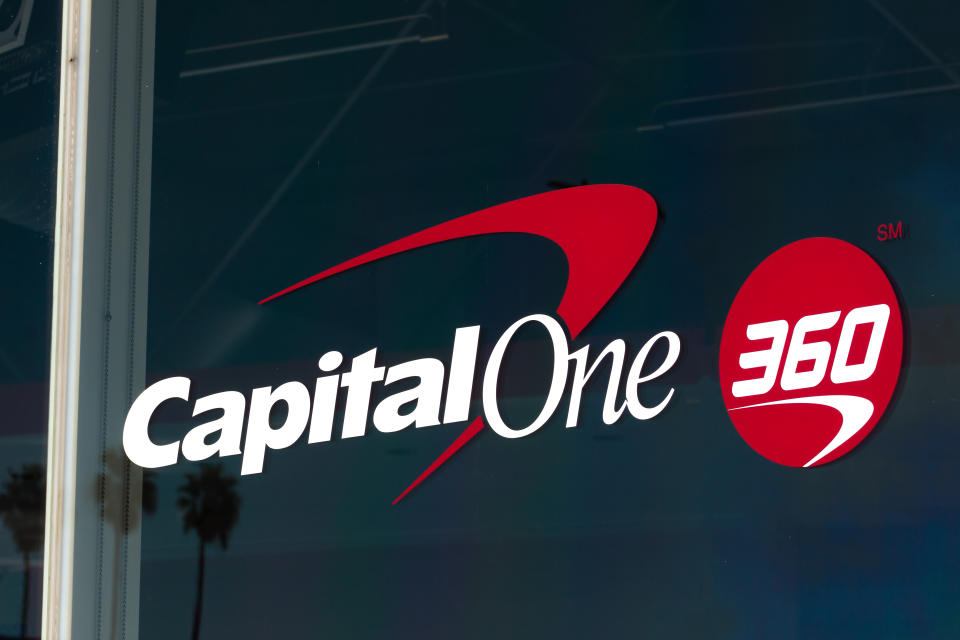Capital One Financial is being sued by savers who say they were tricked into thinking that they were earning the highest rate available from the company’s online banking arm.
The plaintiffs in a lawsuit that seeks class-action status argue that the McLean, Virginia-based bank acted deceptively, dishonestly and unfairly by creating a new high-yield account rather than raising the rates it was paying on its longstanding “360 Savings” account.
Existing 360 Savings customers who were seeking juicier yields in the current higher-rate environment would have needed to open a “360 Performance Savings” account, according to the lawsuit.
“Capital One’s conduct caused its 360 Savings account holders to lose millions of dollars of interest in the aggregate since September 2019, and especially since interest rates began rising rapidly in March of 2022,” the lawsuit states.
Capital One, which is expected to file a response later this week, disclosed the suit last Thursday in a securities filing. A spokesperson for the $471 billion-asset bank declined to comment on the pending litigation.
Since the Federal Reserve started hiking interest rates last year, have required existing savings customers to open separate accounts in order to receive the highest available rates. As of last fall, those banks included UFB Direct, which is a division of Axos Financial, and BrioDirect, which is Webster Financial’s online bank division.
Philip Black, a lawyer for the plaintiffs in the Capital One case, said in an email that he is not aware of any similar lawsuits against other banks. He also said that he does not know how many Capital One customers were harmed by the bank’s practices, but that the discovery process will provide an answer.
The lawsuit was filed by Capital One customers who previously had online high-yield savings accounts with ING Direct USA, which Capital One in 2012. Those accounts became 360 Savings accounts in 2013.
As of Sept. 16, 2019, Capital One was paying 1.00% on the 360 Savings account, according to the complaint. The same month, the bank dropped references to 360 Savings from its website and started advertising a new account called 360 Performance Savings, which at the time paid an annual percentage yield of 1.90%, the lawsuit states.
“There were, and are, no material differences between these two accounts other than the interest rate,” lawyers for the plaintiffs wrote.
“Capital One did not notify its 360 Savings account holders that the 360 Performance Savings account was available, that 360 Performance Savings was, in fact, a different account and not just another name for the 360 Savings account, or that 360 Performance Savings paid a higher rate of interest,” they continued.
After the Fed started hiking interest rates, the difference between the rate paid to 360 Savings customers and the rate paid to 360 Performance Savings customers ballooned.
As of last month, Capital One customers with 360 Performance Savings accounts were receiving 4.30%, while 360 Savings customers were getting 0.30%, according to the latest version of the lawsuit, which was filed in federal court in Virginia.
The plaintiffs argue that Capital One breached its contract with 360 Savings customers, saying that even though the bank had the discretion to establish the interest rate it paid, it did not engage in good faith and fair dealing.
The lawsuit also alleges that Capital One violated certain state laws in Illinois, Virginia, Massachusetts and Pennsylvania, which deal with consumer protection and deceptive business practices. It seeks monetary damages plus an end to Capital One’s alleged misconduct, such as through an order that the bank convert all 360 Savings accounts to 360 Performance Savings accounts.
One of the plaintiffs, an Illinois resident named Samuel Hans, called Capital One earlier this year to request unpaid interest. He was told that it was the responsibility of account holders to ensure that they were earning the highest possible rates, according to the lawsuit.
“We currently don’t send proactive notifications about every rate change that occurs,” the bank later said in an email to Hans, “but you can keep track of your current rates and any recent changes by signing in to the Capital One website or mobile app.”
In response, Hans wrote: “I don’t expect Capital One to notify me every time the interest rate changes. I do expect Capital One to not keep me in a low interest rate earning savings account while publicly advertising a similar sounding savings account with a significantly higher earned rate of interest.”
“I frequently went to the website to check what the earned interest rate was on the sole savings account listed on your website,” he added. “It is a reasonable assumption that since there was only one savings account product listed on the website and that one savings account had a similar sounding name, that was the product my money was in.”
Credit: Source link




